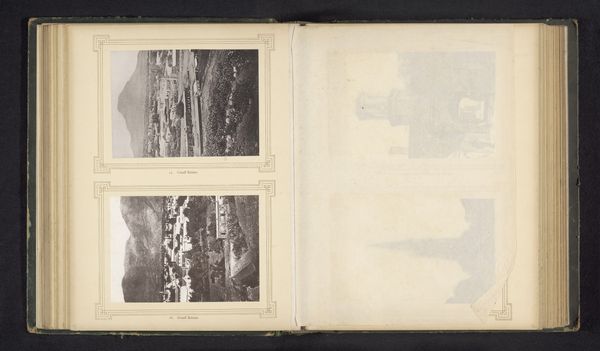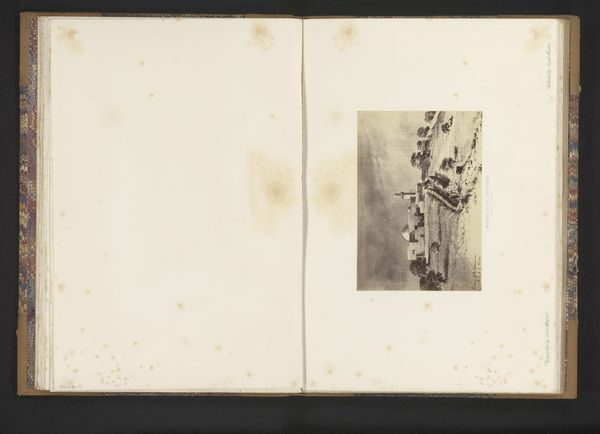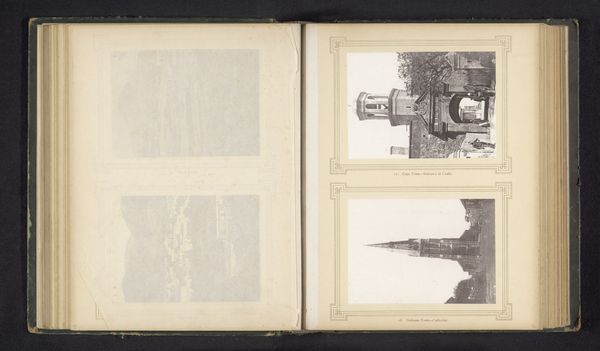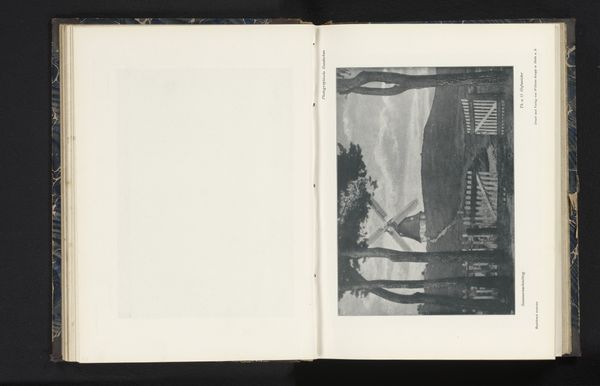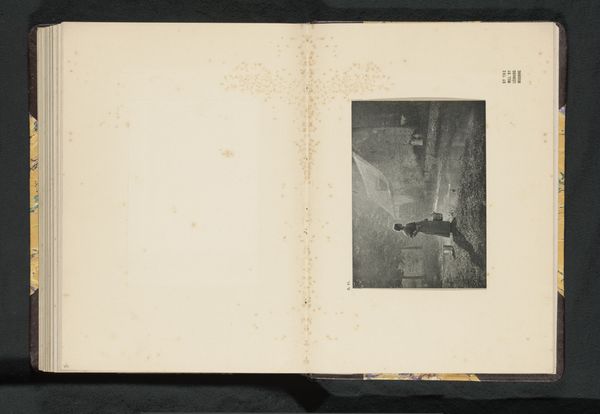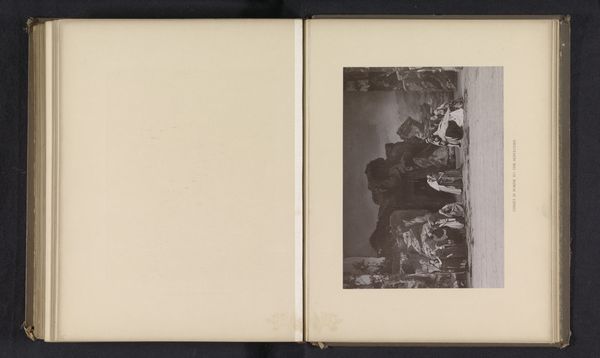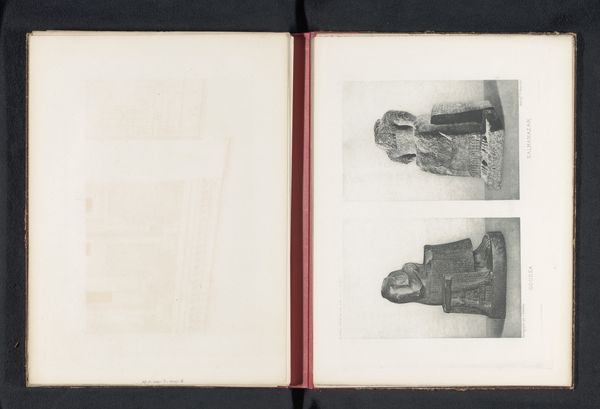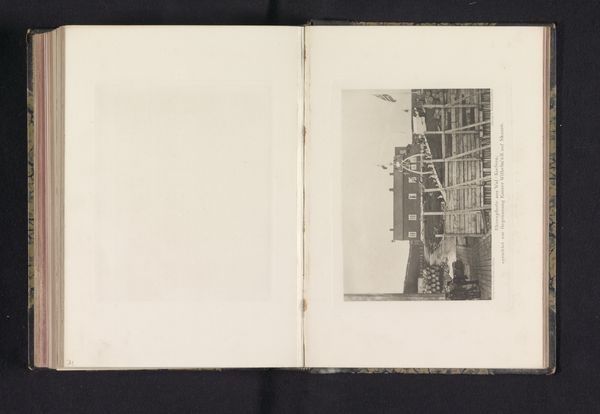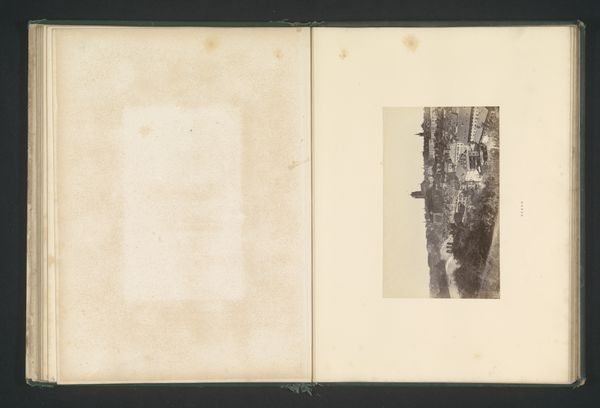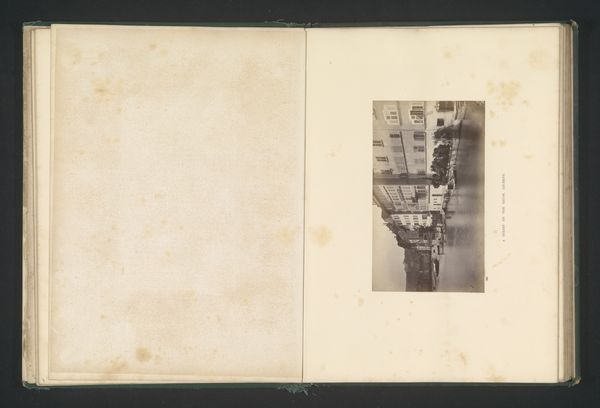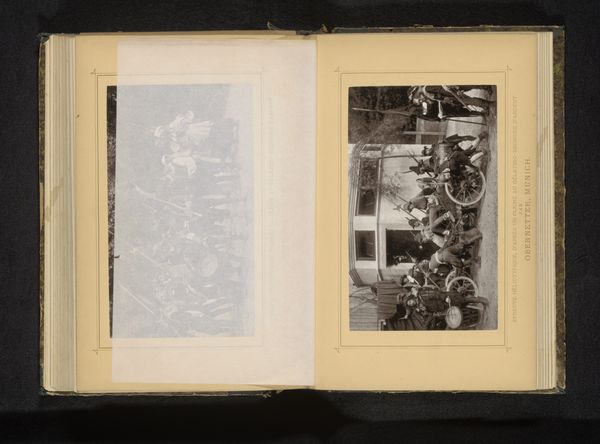![['Native witch doctors', 'Native witch doctresses'] by Sam Alexander](/_next/image?url=https%3A%2F%2Fd2w8kbdekdi1gv.cloudfront.net%2FeyJidWNrZXQiOiAiYXJ0ZXJhLWltYWdlcy1idWNrZXQiLCAia2V5IjogImFydHdvcmtzLzNjMDBkODJmLWJjMDUtNDg5Ny04YjkzLWZmNzRmMmZiMDczYS8zYzAwZDgyZi1iYzA1LTQ4OTctOGI5My1mZjc0ZjJmYjA3M2FfZnVsbC5qcGciLCAiZWRpdHMiOiB7InJlc2l6ZSI6IHsid2lkdGgiOiAxOTIwLCAiaGVpZ2h0IjogMTkyMCwgImZpdCI6ICJpbnNpZGUifX19&w=3840&q=75)
paper, photography, albumen-print
#
portrait
#
african-art
#
aged paper
#
homemade paper
#
white palette
#
paper texture
#
paper
#
photography
#
albumen-print
Dimensions: height 219 mm, width 290 mm
Copyright: Rijks Museum: Open Domain
Editor: We're looking at a fascinating albumen print, likely from before 1880, titled "Native witch doctors" or "Native witch doctresses." It depicts indigenous individuals and gives an unsettling feel because of the title. What stands out to you in this image? Curator: I’m drawn to the socio-political context embedded within this seemingly straightforward portrait. The very act of labeling individuals as "witch doctors," framed within a Western lens, reflects a power dynamic. How does this labeling affect our perception, do you think? Editor: It feels like the photograph imposes a colonial view, almost a dehumanizing way of understanding their roles and traditions. Curator: Exactly. This photograph becomes a historical document of cultural encounter, loaded with assumptions and biases. It's also important to consider who commissioned this photograph, who was its intended audience? Was it used for scientific study, public display, or private collection? These answers shed light on its cultural role. The visual composition itself--the staged nature of the portraits within an album, suggests a classification, even a collecting of people as specimens. Editor: I see your point, the way they're presented does feel quite staged and controlled. So, is the artistic value more in the dialogue it opens about how cultures are perceived and documented, rather than the image itself? Curator: Precisely. Its lasting impact lies in how it makes us confront uncomfortable historical realities and the power structures inherent in visual representation. What have you gathered overall from this discussion? Editor: I've gained a deeper understanding of how a seemingly simple photograph can hold layers of historical context, cultural biases, and questions about representation. Thanks!
Comments
No comments
Be the first to comment and join the conversation on the ultimate creative platform.

